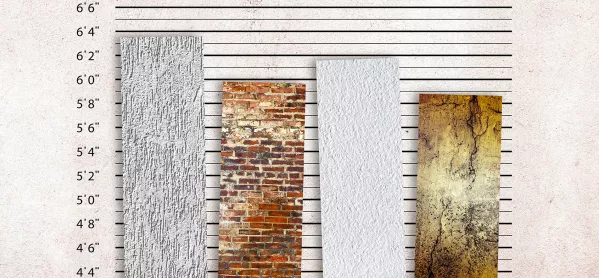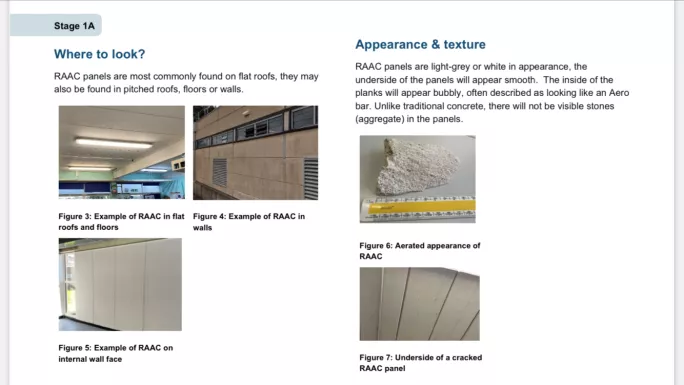Almost 1 in 4 heads lack confidence in identifying RAAC

Almost one in four headteachers and senior leaders lack confidence in their ability to identify whether their school buildings contain reinforced autoclaved aerated concrete (RAAC), Tes can reveal.
Responses to a Teacher Tapp poll show that 23 per cent of heads and senior leaders report no or low confidence in being able to say whether RAAC is present on their school sites.
The findings come after senior Department for Education officials yesterday admitted that they have concerns about the reliability of some school survey responses reporting that sites do not contain RAAC.
The Public Accounts Committee was told yesterday that the DfE plans to carry out a sample of checks on schools built in the era where RAAC was used but where responsible bodies have said they do not believe RAAC is in place.
- Concern: Public spending watchdog criticises DfE over lack of answers on RAAC
- Listen: A look back at a week of concrete chaos for schools
- Exclusive: Schools with suspected RAAC need answers on building safety
Geoff Barton, general secretary of the Association of School and College Leaders, said: “This survey demonstrates the difficulty for schools in identifying RAAC. They will not necessarily have staff with this level of knowledge of a specialist area of building construction.”
He added: “Many schools and trusts will have commissioned building surveys themselves, which constitutes an additional cost that they could well do without.
“As we have said before, the government should have put in place a much better planned and resourced programme to identify and mitigate RAAC at an earlier stage. This would have avoided the disruption and uncertainty that schools are now faced with.”
Today’s data from Teacher Tapp, compiled for Tes, is based on 1,706 responses from senior leaders, including heads and executive heads.
They were asked how confident they were that they have been able to identify RAAC on their site, and given five confidence ratings to choose, with 1 being very confident and 5 being not confident at all.
The data shows that 17 per cent of respondents said they were not confident at all and another 6 per cent chose the second lowest confidence rating.
The responses also show that 43 per cent of respondents were very confident and another 14 per cent chose the second highest confidence rating.
Just over one in 10 respondents said they could not answer, or that the question was not relevant.
Teacher Tapp says the data has a 2 per cent margin for error.
Heads not confident in identifying RAAC
When the figures are broken down for responses from just headteachers, a similar proportion report a lack of confidence.
Responses from 415 heads show 15 per cent reported not being confident at all and another 8 per cent chose the second lowest confidence rating.
James Bowen, assistant general secretary of the NAHT school leaders’ union, said: “It’s unsurprising that a significant proportion of school leaders don’t feel confident in identifying whether or not there is RAAC in their buildings.
“Given that they have no training or expertise in this area, we can hardly expect them to feel confident in identifying specific building materials, and while the DfE’s guide may be of some assistance, it is no substitute for professional assessment.
“Not only that, but RAAC cannot readily be detected by just a visual inspection and, in some schools, it may be hard to even access some of the spaces where it might be present.
“Where responsible bodies have made survey returns indicating that they are unsure if their schools have RAAC, it becomes incumbent on the DfE to help organise further, timely investigations, using qualified experts.”
Guidance provided for responsible bodies by the department on how to identify RAAC provides a series of photographs of examples of RAAC in walls and ceilings.

However, the usefulness of this has been questioned by school leaders.
Mr Barton said: ”The visual guide provided by the DfE is rudimentary at best and certainly not a viable substitute for a suitably qualified and experienced building surveyor.”
The guidance also says that staff should be aware that if they need to look behind ceilings or finishes, they should consult guidance about managing asbestos and the building’s asbestos register before doing so.
The government is also facing calls today from the NASUWT teaching union to produce a timetable for when all surveying work on schools with suspected RAAC will take place.
A DfE spokesperson said: “Responsible bodies were sent questionnaires on RAAC in their estates in 2022 and we have been proactive in following up with them.
“There is extensive guidance provided to support these visual inspections and if there is any suspicion RAAC may be present or if there is any doubt, it will be swiftly investigated by appropriate surveyors.”
You need a Tes subscription to read this article
Subscribe now to read this article and get other subscriber-only content:
- Unlimited access to all Tes magazine content
- Exclusive subscriber-only stories
- Award-winning email newsletters
Already a subscriber? Log in
You need a subscription to read this article
Subscribe now to read this article and get other subscriber-only content, including:
- Unlimited access to all Tes magazine content
- Exclusive subscriber-only stories
- Award-winning email newsletters



